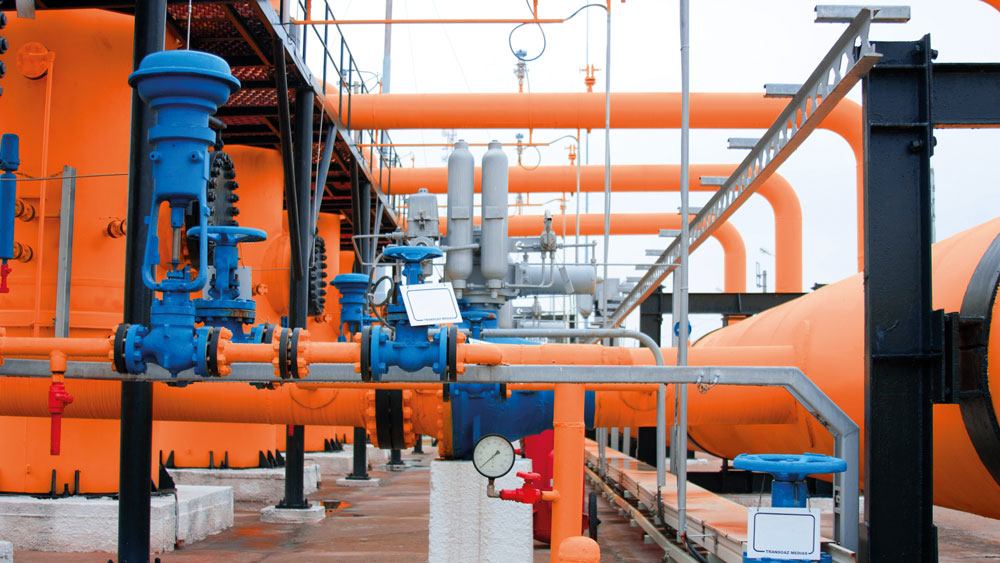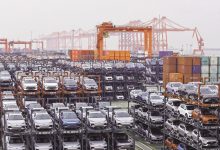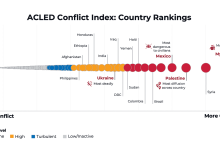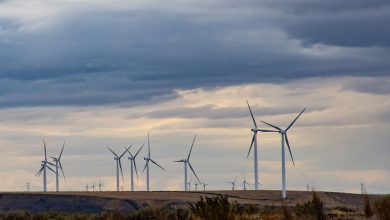Romania, hub or bug
In 2019 we will celebrate ten years since the territory of Romania increased by almost 10,000 square kilometers of continental shelf and exclusive economic zone, following the historical decision of 3 February 2009 of the International Court of Justice in The Hague. Romania needed half a century to get a favorable judgment in this dispute with the former USSR and, after the break-up of this union, with the neighboring state Ukraine. Since that moment, consistent deposits of natural gas and, probably, crude oil have been discovered in the new territory. The question everyone is asking is whether Romania has the capacity to use these resources in a smart way and to the benefit of its own budget and own citizens and become, as several officials claim, a regional energy hub and a factor of energy stability and security.
Helped by its topography, geography and a generous range of natural resources, Romania has been trying for years to position itself in the region as an energy leader. Romania has also had the opportunity to get a similar status in terms of agriculture or other fields, but these opportunities are either lost or so fragile that they become invisible. So all it has left is energy.
While in the electricity sector Romania is already a net exporter in the region, in the gas sector things are slightly different. Although it is the fourth largest gas producer in Europe, after Norway, the UK and the Netherlands, Romania cannot fully cover its own gas consumption. Thus, it annually resorts to imports, especially from the Russian Federation, via Ukraine.
The beginning of 2009, a year that, as I have already mentioned, was historical for Romania, has also marked a reminder for what the power and importance of energy resources mean. A month before the delivery of the judgment of the International Court of Justice in The Hague, under which Romania took possession of 9,700 square kilometers of continental shelf in the Black Sea, the Russian Federation limited or even ceased gas exports to South-Eastern European states.
Romania imports Russian natural gas through two points, Mediesu Aurit to the north and Isaccea to the south-east, both at the border with Ukraine. Unlike Bulgaria, for example, entirely dependent on import, Romania hasn’t suffered too much following Moscow’s decision in 2009, this thanks to the gas storage capacity of up to 3 billion cubic meters per year. As an aside, Romania and Russia had been discussing for years, at the time, about the involvement in a partnership to build an underground gas storage facility, in Roman-Margineni, Neamt County. The capacity of that facility would have been huge, of 2 billion cubic meters. But nothing has materialized from all those discussions and this subject isn’t even on the agenda of those responsible for the development of the Romanian energy system.
We have the means, but what do we do with what we have?
“We have our own natural resources, we have a strategic geographical position, we have energy transmission and storage capacities. We also have centralized trading platforms. What are we lacking? We lack an organizational structure. We don’t lack its components, but they must be protected and developed, as they are in various stages of development. We have absolutely all the conditions and I think we should take this step and become a regional energy hub,” the Energy Minister Anton Anton stated in late June.
But the problem is more complicated. Yes, we can say Romania has resources. Apart for the probable and confirmed national hydrocarbon reserves, in the Black Sea alone there are, according to statements of National Agency for Mineral Resources officials made early this year, reserves of 180-200 billion cubic meters. In the meantime, it seems that Romania’s total reserves have recently increased by 40 billion cubic meters, according to information appeared from government sources claiming that OMV Petrom and Hunt Oil have discovered, in Padina, Buzau County, the largest onshore gas field in the last decades, of over 40 billion cubic meters. However, this figure hasn’t been confirmed by OMV Petrom or Hunt Oil. For now. If we also consider the Caragele field, discovered by the state-owned company Romgaz, of 27-30 billion cubic meters, some enthusiasts might consider the energy future of the country (and not only) assured.
It’s true that Romania has a history of 160 years of oil industry and an experience of over 100 years in the natural gas industry. But let’s not forget that most hydrocarbon fields in Romania are mature, having a duration of exploitation of over 25-30 years. But these figures don’t matter much until the respective resources are extracted and used.
Another important part of a regional gas hub is represented by infrastructure. While Romania has a gas storage capacity, although insufficient even under the current conditions of consumption, things are not great when it comes to gas transmission pipelines. According to data provided last year by Transgaz, operator of the national gas transmission system, of the 13,307 kilometers in operation, about 73% have an effective duration of operation higher than 20 years, close to their normal lifespan. In other words, these pipelines should be changed.
But, when it comes to investments in upgrade and maintenance, Romanian energy companies are not doing very well, meaning that many of them, such as Transgaz, Transelectrica or Hidroelectrica, have delayed these investments for years. In turn, they reported huge profits.
A dream within a dream
Thus, Romania’s dream to become a regional gas hub is getting close to reality, with several amendments… Romania has gas production, has a certain transmission and storage infrastructure. But what doesn’t it have? Some voices in the public space claim the lack of vision. The question “What will we do with the Black Sea gas?” is on the lips of many, but for now there is no clear answer. Last but not least, should the state get involved in how Black Sea gas will be used or the market should be allowed to decide?
Still, in terms of gas production one cannot say that Romania holds the control either, as the Black Sea fields cannot be exploited by companies owned by the Romanian state. Thus, the decision to start gas extraction belongs to the titleholders – ExxonMobil, OMV Petrom, Black Sea Oil and Gas, Lukoil. So does the modality of using these resources, at a rate of 50%. The offshore law recently adopted by the Parliament forces titleholders to deliver 50% of production, in a transparent and non-discriminatory manner, to the domestic market.
Looking at the situation objectively, only the gas storage sector is truly controlled by the state, through Romgaz, the company that owns most gas storage facilities.
Third party included
As the Romanian Energy Minister said, each country in the region wants to become a ‘small gas hub’. But this is not a novelty. Hungary has been working at this plan for a longer time and so does Bulgaria. Romania isn’t sitting aside either, but it seems that it has lost the start. In turn, Russia is in maximum rush with the construction of new interconnections with the allied states in the European Union, thus trying to strangle any competition in the region. As recently as June the CEO of Gazprom, Alexei Miller, said that gas to be supplied through the second line of Turkish Stream gas pipeline would reach the pipelines of Bulgaria, Serbia and Hungary in the first half of 2020, when the gas pipeline operates at the planned capacity.
Turkish (Turk) Stream is the second pipeline that Gazprom is currently building to supply gas to Europe, bypassing Ukraine (and Romania, as transit to Southern Europe is done through the pipelines crossing Dobrogea, from north to south), together with Nord Stream 2.
Estimated at EUR 7 billion, the TurkStream project provides for the construction of two pipelines, each with a capacity of 15.75 billion cubic meters of gas per year. Shortly after the announcement of Gazprom head, Bulgaria announced that a branch of TurkStream would reach its territory.
Moreover, in May, Energy ministers of Bulgaria and Serbia signed an agreement to implement the project of a gas interconnector between the two countries. The gas pipeline, the first to link the transmission systems of the two countries, will have a transfer capacity of up to 1.8 billion cubic meters of gas per year in Bulgaria-Serbia direction and only 0.15 billion cubic meters on the opposite direction, Serbia-Bulgaria.
Serbia’s supply with Romanian gas has been discussed by government officials in Serbia and Romania, but it is unknown whether these discussions have advanced to a common denominator.
Hungary has opted for a series of declarations considered at least informal. In an unusual visit to Bucharest, the CEO of FGSZ (Hungary’s gas transmission operator), Kristof Terhes, said Romania doesn’t have the capacity to use gas resources from the Black Sea, so the best solution is to export this gas to Hungary. These statements were doubled by others made in Washington by Hungarian Foreign Minister Peter Szijjarto, who accused Romania of violating the international commitments in terms of interconnection of gas pipelines and ensuring reverse gas flows. He also requested that pressure on Romania to start gas extraction in the Black Sea, as of 2022, be maintained.
The truth of others and our lack of vision
No matter how bothered the Romanian politicians are by the statements of Hungarian politicians, the truth is that the situation of the petrochemical industry in Romania is critical. Although OMV (in Austria) and MOL (in Hungary) – companies carrying out operations in our country – have constantly developed this sector in their countries, things aren’t the same in Romania… Except for KMG International, which has small petrochemical operations at its refinery in Navodari, the Romanian petrochemical industry is almost nonexistent.
Another sad reality: of the 14,000 localities in Romania, only 2,400 are connected to the gas distribution network, i.e. less than 20%. In other words, there’s no one to consume so much gas as it is estimated to be extracted from the Black Sea.
It is true that the Ministry of Energy has put pressure for the legislation to be amended so that municipalities can grant the concession of the gas supply service, but this process takes time. Probably years will have passed until we have 3,000 or 5,000 localities connected to the gas networks.
This is the situation and the praise of the European Commissioner responsible for Climate Policies and Energy, Miguel Arias Cañete, who congratulated Romania for observing the deadlines in terms of BRUA construction and criticized Hungary for its statements regarding Romania, cannot delight anyone. This is because the other states in the region do not show a particular interest in BRUA. The proof is that neither Bulgaria nor Hungary have done anything for the construction of this interconnector.
Last year, Hungary unilaterally decided to stop BRUA on its territory, to no longer invest for interconnection with Austria, as provided by the initial project, and redirect gas to other neighboring states. Hungary’s excuse is that it already has the necessary infrastructure, while Bulgaria’s objective is to strengthen its relations with Russia and Turkey.
Moreover, the statements of Maroš Šefčovič, Vice-President of the European Commission responsible for the Energy Union, who made in early July a visit to Bucharest, that Romania now has a responsibility in terms of energy security for the whole Europe, cannot keep us warm enough.
The EU representative reminded that Romania can play a substantial role including due to Black Sea resources, and BRUA project is considered by the European Union a project of strategic importance, with a substantial financial support.
“There is a new and promising prospect of Black Sea gas extraction and I am glad that you work closely with us to ensure that the BRUA project and other interconnection pipelines will be built, to provide new opportunities for strengthening the internal energy market, especially in this part of Europe that has greatly depended on Russian gas for a long period,” the European official mentioned.
The authorities in Romania repeat at the same time that Black Sea gas must be used to a great extent in Romania, but this isn’t very clear. There are statements according to which this gas will be able to determine the apparition of thermal power plants replacing the old ones of Hunedoara Energy Complex or that Romgaz, which is currently a gas and electricity producer, could also enter the petrochemical segment by taking over a closed chemical plant from businessman Ioan Niculae.
Beyond all these, the offshore law, without which titleholders of hydrocarbon fields in the Black Sea cannot start gas extraction, is still controversial and could suffer changes through Emergency Ordinance.
It is yet uncertain what Romania will do with Black Sea gas and how it will use it to reach its objective to become a regional energy hub. The Energy Minister Anton Anton has even come up with the proposal that Romania, Bulgaria and Hungary create together a regional hub, but it is less likely that the two neighboring states would agree, given their plans in the energy sector.
Maybe the future National Energy Strategy will bring at least partially an answer to this question. If not, we will include the chance for Romania to become a regional or even European energy force in the chapter of failures. Unfortunately, it wouldn’t be the first time.







